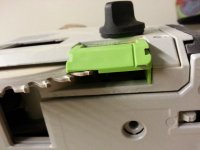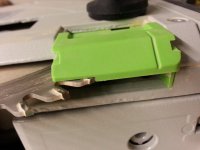chavezja03
Member
- Joined
- May 6, 2014
- Messages
- 13
Sorry if this has been posted before, but here goes. I got to thinking about the splinter guard's purpose and was wondering if it was only good for the first cut, which is what cuts the splinter guard. Just to clarify, I'm talking about the splinter guard on the saw. If I set my depth of cut to 1", is that the only depth of cut I can make that will allow the splinter guard to do it's job? What if I increase the depth of cut to 1 1/2", make some cuts and then go back down to 1"? Is the splinter guard not doing it's job anymore because now the gap from the blade to the splinter guard has increased? Just wondering if I need to purchase more splinter guards and mark them with different depths of cut.


